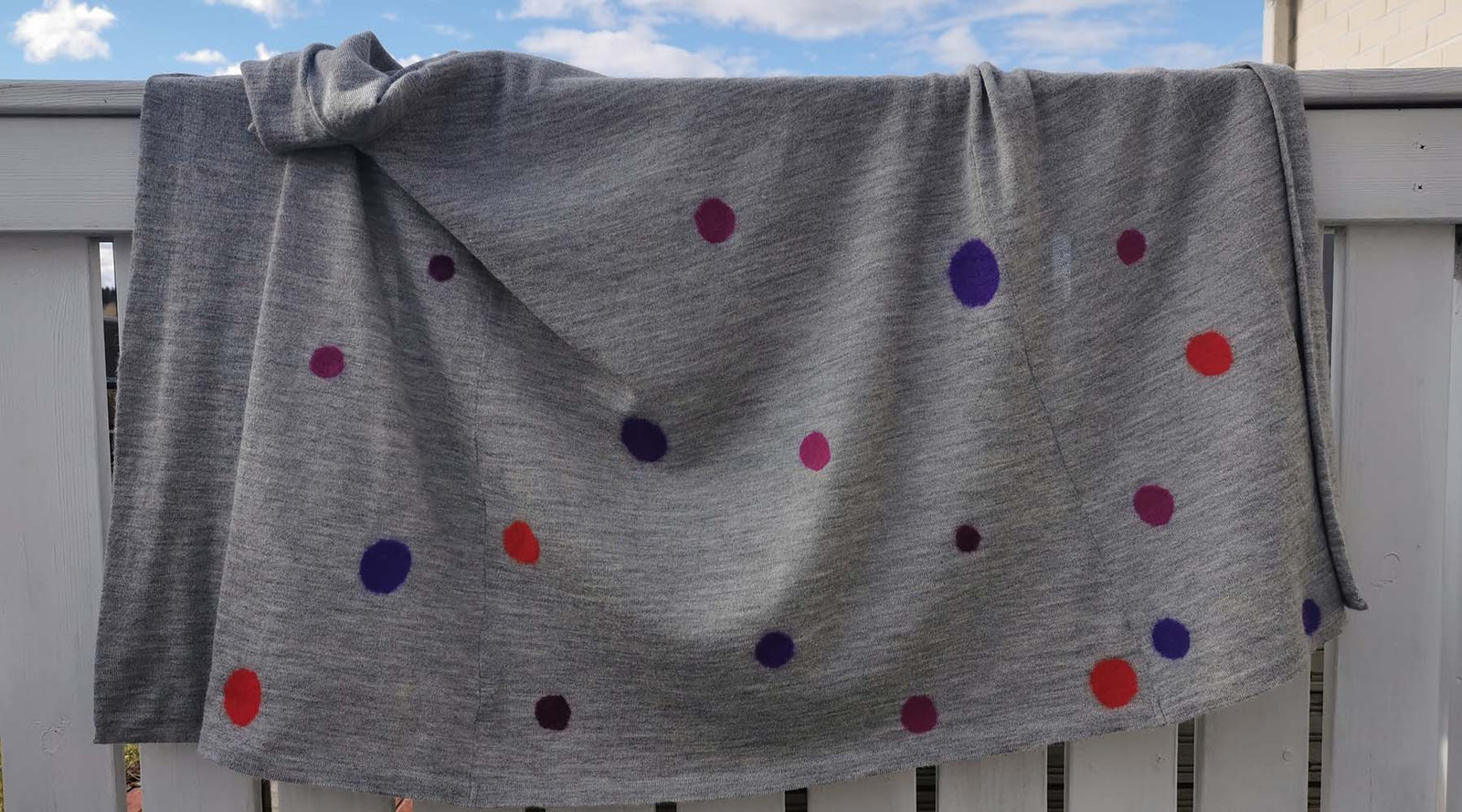Congratulations! You have chosen the long-lasting and durable Classy alpaca knit as your new favourite garment. You must have noticed that alpaca fiber is smooth and soft. I regret to say that the textile pests of the insect world also appreciate these wonderful properties. Unfortunately, alpaca is no exception to other natural fibers that are perfectly suitable as food for many insects.
The cardigan in the picture was forgotten and accessible to pests, and so the user was able to patch a dozen holes.

Noisy pests
Unfortunately, there are many pests. Perhaps the most typical and easily recognizable is the moth, i.e. clothes moth or fur moth. They are pale, light-addicted moths, and when you crush them with your finger, you get a golden glitter on your hand. Moths tend to lay their eggs in animal fiber material that is in the dark. It is the moth larvae that cause the damage when they start eating immediately after hatching. A clothes moth larva bites through jagged holes and leaves droppings, while a fur moth larva cleanly eats large smooth openings.

Photo by Olaf Leillinger , CC BY-SA 2.5 , via Wikimedia Commons

Photo: Sarefo , CC BY-SA 3.0 , via Wikimedia Commons

Photo: Sarefo , CC BY-SA 3.0 , via Wikimedia Commons
Beetles also have textile eaters. For example, fur beetles can even be harmful to the entire household. Among the species of fur beetles, the most common are the spotted fur beetle (carpet beatle), which is equipped with three pale spots on the back, and the girdle beetle, which has a yellowish pattern on the back resembling a saw blade. Both are dark in main color.

Image by Francisco Welter-Schultes , CC0, via Wikimedia Commons
Fur beetle larvae especially eat dirty woolen clothes, but they may leave your sweater alone if other food is available and the apartment is clean. Also, for example, a museum beetle with its larvae can damage textiles.
Prevention
Perhaps the most important means of pest prevention is cleanliness of both clothes and the home. Of course, this is also unfortunately not an absolutely effective method. Knitwear should be aired often and stains should be washed away. You can find more tips in our care instructions .
Knitwear should be stored clean and in sensibly clean wardrobes. They can also be stored for protection in, for example, a paper bag, cardboard box or pillowcase.
At Classy, we appreciate the values of slow fashion and we think that the garment should last even for the next wearer. However, you should be careful when tinkering so that your other clothes last as well. Flea markets and second-hand stores may expose your closet to nasty insects. The clothes may contain, for example, the eggs of the pests mentioned above, and thus there is a great risk of damage to alpaca knits as well. It is good to wash textiles that can withstand hot washing, and keeping clothes in the freezer for a week also eliminates pests.
Save
As soon as you notice a possible pest observation, get your precious alpaca sweaters to safety. Alpaca cannot withstand high washing temperatures, so hang the sweaters outside and put them in the freezer at least -20 °C for at least a week, even longer. Other textiles can possibly be washed at 60–90 °C or taken to the sauna for a few hours. It is also good to brush or wash carpets, as well as wardrobes, with disinfecting detergents.
In the fight against moths or beetles, you can also consider the possibility of spraying, i.e. poisoning the individuals. Different insect sprays, sprayed in the right places, can be a really effective means. Various dark recesses such as baseboards are suitable hiding places for insects and thus important places to mist. In the case of fur beetles, you can also think about pest control for the whole house or housing association.
There are both natural and chemical solutions for maintenance control. Cedarwood and lavender are said to repel moths. However, these do not work on non-adult butterfly individuals. There are various hanging moth repellents and traps for sale in stores, which partly contain the same mechanisms as the natural alternatives. These must be changed every three months.

With these tips, have a good day and warm years with your Classy alpaca sweater!




